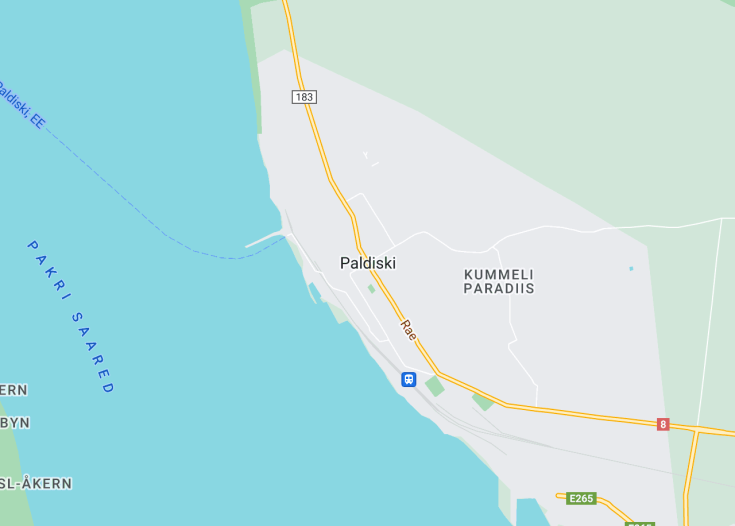Nestled on the rugged coast of Estonia, Paldiski is a destination rich in history and natural beauty. Once a closed Soviet naval base, this town has transformed into a fascinating blend of cultural heritage and modern development. Visitors can explore historical sites like the Baltic Port ruins and the Soviet-era buildings, while the surrounding Pakri cliffs offer breathtaking sea views. This unique mix of nature and history makes Paldiski a compelling destination for travelers seeking a deeper understanding of Estonia’s past and present.
Bring comfortable walking shoes to explore Paldiski’s historical sites and the scenic Pakri cliffs; many areas are best accessed on foot.
Consider visiting during the summer months when the weather is warmer and the natural surroundings are at their most vibrant for outdoor activities.
Top things to do & see in Paldiski
Select the following sights and activities to discover best tickets and tours available in Paldiski.
Paldiski: A Glimpse into Estonia’s Historic Port Town
| Country | Estonia |
| Time in Paldiski | GMT+2 |
| Language spoken | Estonian |
| Population | 4,126 (according to Statistics Estonia, 2023) |
| Currency | Euro (€, EUR) |
| Airports |
|
Paldiski, located on the Baltic Sea coast in Estonia, was historically known as Baltiski. The town has a rich history dating back to its days as a Swedish naval base in the 18th century. Afterward, it served as a Soviet naval base, making its access restricted until Estonia regained independence in 1991. Today, Paldiski is transitioning into a peaceful port town that focuses on renewable energies, including being a site for wind energy production. Its interesting mix of historic and modern influences, the presence of the Pakri lighthouse, and the scenic coastline are significant points of interest. Additionally, Paldiski’s proximity to Tallinn makes it an accessible destination for those interested in exploring unique historical sites.
Where is Paldiski?
Paldiski is situated on the Pakri peninsula in northwestern Estonia, positioned directly on the coast of the Baltic Sea.
Distances:
| Route | Distance by car | Time by car |
|---|---|---|
| Tallinn to Paldiski | 31 miles / 50 kilometers | 50 minutes |
What is Paldiski famous for?
Paldiski is renowned for its historical significance as a closed off Soviet naval base. Nowadays, it is known for its strategic shipping ports, the Pakri lighthouse, and its roles in renewable energy projects within Estonia.
History
Before the 18th Century
Known historically as Rogerwiek, the area surrounding Paldiski, Estonia, has been of strategic significance due to its position on the Baltic Sea. Settlements in the region can be traced back to ancient times, particularly serving as a relevant fishing and trade spot for local tribes. The region saw various powers vying for control due to its geographic importance.
1718 – 1918: Development of a Russian Naval Base
Paldiski’s modern development began in 1718 under the rule of Peter the Great of Russia, who established a naval base here. Named “Baltiyskiy Port,” it served as a key outpost for the Russian navy on the Baltic Sea. The construction of fortifications and naval facilities, under Russian administration, transformed Paldiski into a significant military port. During this era, the town saw a mix of military personnel and civilian settlers, facilitating a multicultural environment.
1918 – 1991: Soviet Military Base
Following the 1917 Russian Revolution, Paldiski continued to serve as a strategic military base. After Estonia’s brief period of independence, the town was once again under Soviet control from 1944 to 1991 and became a closed city due to its status as a Soviet nuclear submarine training centre. The presence of two nuclear reactors and the restrictive access marked a unique and secretive chapter in Paldiski’s history.
1991 to Present: Regaining and Rebuilding
With Estonia’s re-independence in 1991, Paldiski went through significant transformation. The Soviet military and nuclear facilities were dismantled, and the town was opened to the public. Since then, Paldiski has been reinventing itself, shifting from its military legacy to focus on becoming a commercial hub, aided by its ports and strategic location. Efforts have been made to revitalize the town and attract tourism and business investments, which continue to shape its current identity.
Visit Paldiski
What to see and do in Paldiski, Estonia
Paldiski offers visitors a unique look into both its rich history and natural beauty. Key attractions include the Pakri Lighthouse, providing panoramic views of the Baltic Sea. Explore the limestone cliffs of the Pakri Peninsula for breathtaking landscapes and nature walks. Historical enthusiasts can tour the remnants of the Soviet era, including abandoned military structures. The town’s maritime museum and the nearby Amandus Adamson Studio Museum also offer insightful exhibits about the region’s art and history.
Annual Celebrations in Paldiski
Paldiski hosts several cultural activities throughout the year, including the Paldiski Days in early May, which celebrate the town’s heritage and community with local music, food, and art. The Summer Festival in August draws visitors with its lively concerts and public gatherings, reflecting the town’s developing cultural scene.
Best time to visit Paldiski
The best time to visit Paldiski is during the late spring to early autumn months, from May to September, when the weather is most pleasant for exploring the outdoors and the cultural festivals are in full swing.
Is Paldiski worth visiting?
Paldiski offers a unique blend of historical intrigue, natural beauty, and cultural richness, making it a worthwhile visit for those interested in exploring off-the-beaten-path destinations. While the remnants of its Soviet past, including abandoned structures, might not appeal to all, they add a hauntingly beautiful narrative to the picturesque landscapes. Challenges include limited tourist facilities, but the authenticity and uncrowed sites make up for any inconveniences, promising a memorable experience.

















